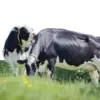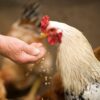what are the main issues faced by animal Supplements and feeds manufacturers and buyer’s
Main Challenges in Animal Supplements and Feed Manufacturing: Industry and Buyer Perspectives
The global animal supplements and feed industry faces a complex array of challenges that impact both manufacturers and buyers. From volatile raw material costs and stringent regulatory frameworks to supply chain disruptions and evolving consumer demands, stakeholders must navigate a landscape shaped by economic, environmental, and technological pressures. Simultaneously, buyers—including farmers,livestock producers, and pet owners—grapple with feed quality inconsistencies, price fluctuations, and risks associated with product safety. This report examines these interconnected challenges, supported by insights from industry analyses, regulatory studies, and market trends, to provide a comprehensive overview of the hurdles shaping this critical sector.
Resource Scarcity and Cost Volatility
Rising Raw Material Prices
Feed manufacturers face significant financial strain due to the volatility of key ingredients such as corn, soybeans, and fishmeal. Climate change, geopolitical tensions, and competition from human food and biofuel industries have driven price instability[1][6]. For instance, soybean meal prices surged by 23% in 2024 due to droughts in Argentina and Brazil, major exporters of soybeans[4][12]. This volatility directly impacts production costs, as feed constitutes 60–70% of livestock farming expenses[1][14]. Buyers, particularly small-scale farmers, struggle to budget effectively, often sacrificing feed quality for affordability[9][14].
Alternative Protein Sources
To mitigate reliance on traditional ingredients, manufacturers are exploring alternatives like insect meal (e.g., black soldier fly larvae) and agricultural byproducts (e.g., dried distillers’ grains). However, these alternatives introduce variability in nutrient profiles. For example, sorghum and canola meal contain anti-nutritional factors (ANFs) like tannins and glucosinolates, which reduce digestibility by 15–25%[1][11]. Buyers must balance cost savings with potential performance trade-offs, requiring precise formulation guidance from suppliers[1][5].
Feed Quality and Safety Risks
Contamination and Mycotoxins
Feed safety remains a critical concern, with contaminants like aflatoxins and heavy metals posing health risks to animals and humans. A 2024 study found that 18% of poultry feed samples in India exceeded permissible mycotoxin limits, leading to liver damage in birds and residual toxins in eggs[10][16]. Manufacturers must implement rigorous testing protocols, yet many small-scale mills lack access to advanced analytical tools[10][15]. Buyers, especially in developing regions, often rely on visual inspections, increasing the risk of purchasing substandard feed[15][16].
Anti-Nutritional Factors and Digestibility
ANFs in plant-based ingredients, such as gossypol in cottonseed meal and chitin in insect exoskeletons, impair nutrient absorption. For instance, tannins in sorghum reduce protein digestibility in poultry by up to 30%, necessitating enzyme additives to counteract these effects[1][11]. Buyers face hidden costs when such factors lead to slower growth rates or increased veterinary expenses[11][14].
Regulatory Compliance and Standardization
Divergent Global Regulations
Manufacturers operating in multiple regions confront a patchwork of regulations. The EU’s ban on prophylactic antibiotics in feed contrasts with less restrictive policies in parts of Asia, complicating export strategies[3][8]. In 2024, the U.S. FDA introduced stricter labeling requirements for pet supplements, mandating clinical trial data for joint health claims—a move that increased approval timelines by six months[3][8]. Small manufacturers often lack the resources to comply, limiting market access[3][14].
Residue Testing and Human Safety
For feed additives used in food-producing animals, residue testing is mandatory to establish tolerance levels. Radiolabeled studies, required in the EU and U.S., cost upwards of $500,000 per compound, creating financial barriers for new entrants[3][10]. Buyers, particularly in export-oriented markets, risk non-compliance penalties if residues exceed importers’ thresholds[3][4].
Supply Chain Disruptions and Logistics
Post-Pandemic and Geopolitical Pressures
The COVID-19 pandemic exposed vulnerabilities in global supply chains, with 36–46% reductions in feed mill production capacity due to delayed raw material shipments[13]. The Russia-Ukraine conflict further disrupted grain exports, increasing maize prices by 34% in Africa[4][12]. Buyers in regions dependent on imports, such as Southeast Asia, faced stockouts, forcing them to switch to less optimal local ingredients[4][13].
Energy Costs and Processing
Energy-intensive processes like pelleting and extrusion account for 40% of feed production costs. In Europe, natural gas prices rose by 300% in 2023, prompting some manufacturers to halt operations[12][14]. Buyers in these markets experienced 20–25% price hikes, straining profitability[12][14].
Environmental Sustainability Imperatives
Carbon Footprint Reduction
Livestock feed production contributes 14.5% of global greenhouse gas emissions, primarily through land-use changes and methane from ruminants[1][4]. Manufacturers are adopting circular economy models, such as using food waste to cultivate black soldier flies, reducing reliance on soy and lowering emissions by 50% per ton of protein[1][5]. However, scaling these solutions requires significant R&D investment, which many firms cannot afford[1][14].
Water and Land Use Efficiency
Water scarcity affects 40% of feed crop regions, necessitating drought-resistant crops like millet. In India, sorghum-based feeds reduced water usage by 30% compared to maize, but lower energy content necessitated supplementation with costly oilseed meals[5][14]. Buyers in arid regions prioritize such innovations but face higher upfront costs[5][9].
Technological and Market Dynamics
Precision Nutrition and IoT
Automated feeders with IoT sensors enable real-time diet adjustments, improving feed efficiency by 12–18%[1][12]. For example, dairy farms using precision systems reduced nitrogen excretion by 22%, aligning with EU environmental regulations[1][10]. However, high implementation costs ($50,000–$100,000 per farm) limit adoption to large-scale operations[1][9].
E-Commerce and Fraud Risks
Online sales of pet supplements grew by 45% in 2024, but 32% of products tested in the U.S. contained unlisted ingredients, including toxic herbs[8][16]. Buyers increasingly demand third-party certifications, yet only 15% of manufacturers provide batch-specific lab reports[8][16].
Conclusion and Recommendations
The animal supplements and feed industry must address interconnected challenges through collaboration and innovation. Manufacturers should invest in alternative proteins and digital traceability systems to enhance sustainability and compliance. Buyers must prioritize supplier audits and diversify sourcing to mitigate supply chain risks. Regulatory harmonization, particularly in residue testing and antibiotic use, is critical to reducing trade barriers. Finally, combating misinformation through transparent labeling and stakeholder education will build trust across the value chain, ensuring the sector’s resilience amid global uncertainties.
This report synthesizes insights from industry reports, academic studies, and market analyses to provide a holistic view of the challenges faced by manufacturers and buyers. By addressing these issues proactively, stakeholders can foster a more sustainable and equitable future for animal nutrition.


Add comment